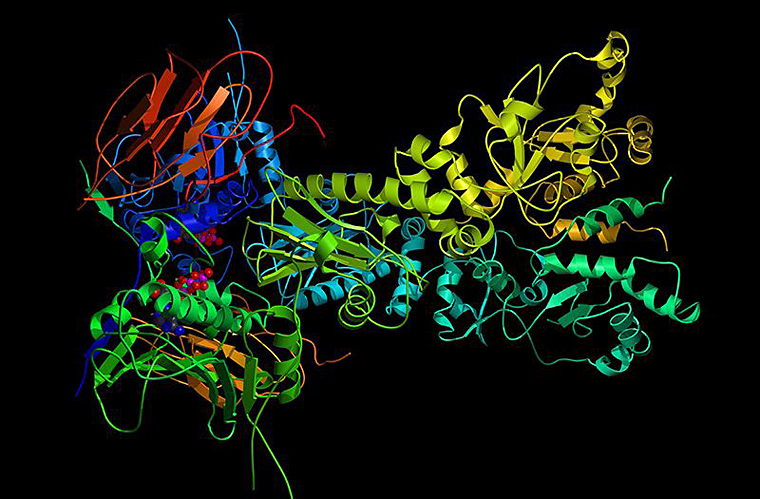
Life as we know it is made up of proteins, amino acid structures of great variety allowing for the assembly of DNA, RNA the other solid structures of living things. At the scale of individual proteins, we are talking about structures that are micro-cellular; literally millions of proteins fill each individual cell in our bodies, and their functions within our cells are a matter of life and death.
The beginnings of primordial life on earth, some speculate, began with the auspicious coming together of amino acids to form the very first proteins. The amino acids, it is believed, may have originated in the interstellar debris of comets and meteors that rained down upon the earth during the formation of the solar system. In any event, the immersion of these amino acids within the “soup” of early earth and the formation of proteins that can replicate is credited with the miracle we call life.
Proteins are not simple regular little shapes, like soccer balls or short sticks. Beginning as ribbon-like strands, proteins spontaneously “fold” themselves into extremely complex origami-like shapes and structures. The specific way in which a particular protein is folded determines how it works and interacts within the living cell, and provides the ability for proteins to accomplish the many tasks essential to sustaining life. Given that each human body contains more than 40 trillion cells, one cannot compute the total number of proteins in a single person, or the diversity of folded shapes and functions. The number of possible folding variations is roughly 10 to the 30th, a number so large it would take well over a billion years to try each variation at one per second. Yet proteins fold into a shape specific to their function within 130 millionths of a second. Fast is an understatement.
Proteins sometimes fold improperly, and with uncountable numbers of them it’s inevitable that many will be errant. These protein errors are mostly dissolved and their components recycled, but sometimes, if they proliferate, they can cause serious health problems. Alzheimer’s disease, it is suspected, is caused by an accumulation of improperly folded proteins called prions, which aggregate and clog the brain’s discrete and delicate structures causing cognitive problems.
The mechanism of protein folding is not well understood. What sort of intelligence regulates or directs the folding process, and determines final shapes? What starts and stops the folding process, and how is information about needed shapes created and transmitted at such incredible speed? Keep in mind, we are talking about structures of such miniscule size that they are molecular in scale. Yet the precise nature of the final folded structure is essential to the proper functioning of each cell. It’s impressive.
A recent paper on the topic indicates that the molecular relationship between water and proteins is a critical component. Proteins exist and function within the medium of the cell, which is mostly water. When water temperatures drop, the protein folding unravels. Moreover, there may be a relationship between water and proteins at a quantum level, raising the possibility that information about folding is being transmitted at the quantum level. And if this is the case, quantum entanglement at a distance may be involved; information on the dynamics of protein folding may be transmitted faster than light-speed from anywhere in space. Anywhere.
Now that’s just spooky.